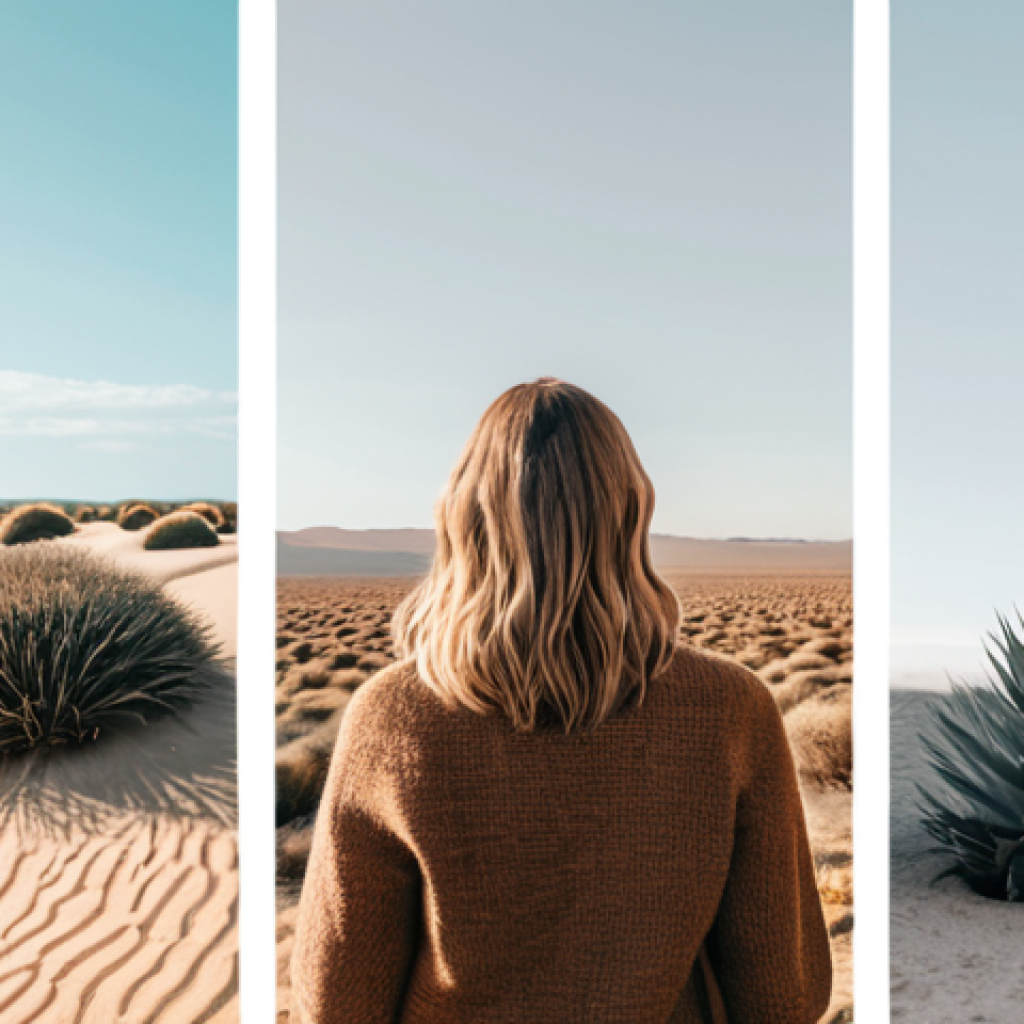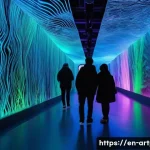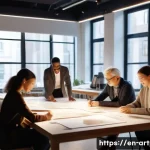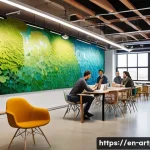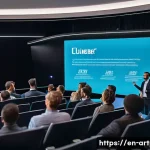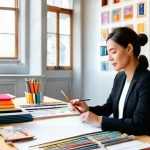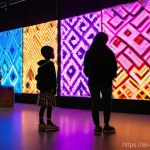It feels like just yesterday, the art and culture sector was viewed through a very traditional lens, almost immune to the rapid changes sweeping other industries.
But boy, has that changed! From my own observations, closely tracking job postings for art and culture planning agencies, it’s clear we’re witnessing an incredible transformation.
Roles now demand a blend of digital fluency, community building, and an entrepreneurial spirit, pushing beyond the conventional. We’re seeing a fascinating pivot towards immersive digital experiences and sustainable models, something I never imagined would become so central.
It makes you wonder what skills are truly paramount for success in this evolving landscape.
It makes you wonder what skills are truly paramount for success in this evolving landscape. We’ll explore it precisely.
Embracing the Digital Canvas: Beyond Exhibition Walls
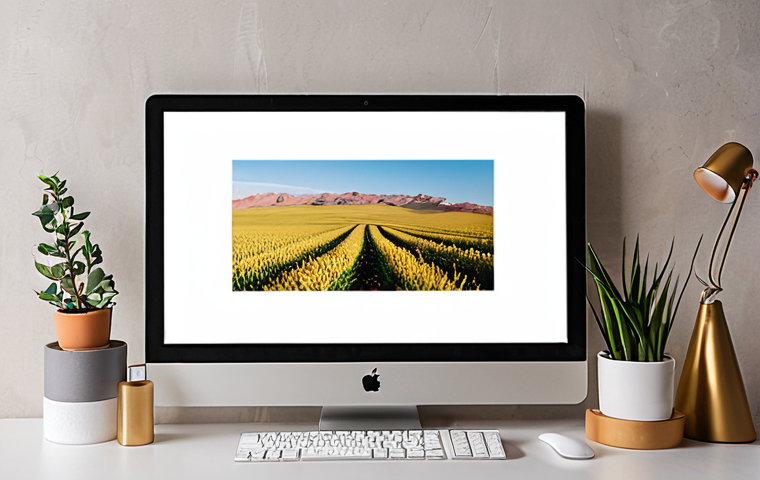
From my own vantage point, having navigated this dynamic industry for years, the most striking shift has undeniably been the accelerated embrace of digital platforms.
It’s no longer just about digitizing archives or creating virtual tours; we’re talking about entirely new forms of artistic expression and audience engagement that leverage technology at their core.
I remember countless conversations just a decade ago where digital was seen as an ‘add-on,’ a nice-to-have, not a fundamental pillar. Now, it’s a prerequisite.
Planning agencies are actively seeking individuals who don’t just understand digital tools but can conceptualize and execute immersive, interactive experiences that transcend geographical boundaries.
It’s a brave new world, and honestly, it’s exhilarating to see the creativity that’s emerging from this convergence of art and tech. It’s fundamentally reshaping how we interact with, consume, and even create art.
1. Virtual & Augmented Reality Experiences
The allure of VR and AR in the arts is undeniable. I’ve personally experienced some breathtaking virtual galleries and augmented reality installations that truly transported me, and that’s exactly what planning roles are now demanding.
* Conceptualizing Immersive Narratives: This isn’t just about scanning a painting; it’s about building a digital world around it, telling a story that unfolds as the user explores.
* Technical Fluency & Collaboration: Understanding the limitations and possibilities of various technologies, and being able to work hand-in-hand with developers and tech artists.
* Accessibility Through Digital: Creating experiences that are not only innovative but also inclusive, reaching audiences who might never step foot into a physical gallery.
2. Data-Driven Audience Engagement
What truly astounds me is how data, once a foreign concept in the arts, has become a powerful tool. It’s not about reducing art to numbers, but understanding how people engage with it.
* Analytics for Impact: Utilizing visitor data, online engagement metrics, and social media insights to tailor programs and measure cultural impact.
* Personalized Art Journeys: Crafting bespoke digital experiences or recommendations based on audience preferences, much like how streaming services suggest movies.
* Strategic Digital Marketing: Developing sophisticated digital campaigns that resonate with diverse demographics, moving far beyond simple email blasts.
The Heart of Community: Art as a Catalyst for Connection
My personal journey in the arts has always underscored the power of community, but I’ve watched it evolve from a vague aspiration into a deeply strategic focus for art and culture planning agencies.
It’s no longer enough to simply host an event; there’s a profound emphasis on fostering genuine connections, empowering local voices, and ensuring art truly reflects and serves its community.
This shift feels incredibly organic and necessary, especially in a world that often feels disconnected. I’ve been involved in projects where the community literally co-created the art, and the sense of ownership and pride was palpable.
It’s a testament to the fact that art thrives when it’s rooted in the lives and experiences of the people it seeks to engage. This human-centric approach is becoming the very bedrock of successful cultural initiatives.
1. Co-creation and Participatory Art
This is where the magic truly happens – when the community isn’t just an audience, but a participant, even a co-creator. * Facilitating Inclusive Workshops: Designing and leading programs that invite diverse community members to contribute to artistic processes.
* Building Local Partnerships: Collaborating with community leaders, non-profits, and local businesses to ensure projects are relevant and sustainable.
* Empowering Marginalized Voices: Creating platforms and opportunities for underrepresented groups to express themselves and share their stories through art.
2. Place-Making and Urban Revitalization
I’ve seen firsthand how art can breathe new life into forgotten spaces and spark urban regeneration. It’s not just about aesthetics; it’s about creating vibrant, living spaces.
* Strategic Site-Specific Programming: Identifying underutilized public spaces and conceptualizing artistic interventions that transform them into cultural hubs.
* Cross-Sector Collaboration: Working with urban planners, architects, and local governments to integrate art seamlessly into city development plans.
* Measuring Social Impact: Developing metrics to assess how artistic projects contribute to community well-being, economic development, and civic pride.
Navigating the Entrepreneurial Current: Beyond Grants
It’s an undeniable truth, one I’ve wrestled with many times myself: the funding landscape for arts and culture has shifted dramatically. Gone are the days when grant applications were the sole focus.
Today, agencies are actively seeking individuals who possess a strong entrepreneurial spirit, capable of identifying diverse revenue streams, forging innovative partnerships, and thinking like a sustainable business while maintaining artistic integrity.
This can be challenging, but it’s also incredibly liberating. I’ve personally witnessed projects flourish because they embraced a hybrid model, proving that creativity and commercial viability aren’t mutually exclusive.
It’s about resilience, adaptability, and a proactive approach to securing the resources needed to bring ambitious artistic visions to life.
1. Diversified Funding Models
Reliance on a single funding source is a recipe for anxiety. Agencies are now actively building robust, diversified financial foundations. * Cultivating Private Philanthropy: Engaging high-net-worth individuals and corporate sponsors who align with artistic missions.
* Exploring Earned Income Opportunities: Developing ticketed events, merchandise, educational programs, or unique experiences that generate revenue.
* Crowdfunding & Digital Fundraising: Leveraging online platforms to engage broader audiences and democratize financial support for projects.
2. Strategic Partnerships and Collaborations
I’ve always believed that collaboration multiplies impact, and in today’s landscape, it’s a strategic imperative. * Inter-organizational Synergies: Forging alliances with non-arts organizations, tech companies, or even local businesses to create mutually beneficial projects.
* Cross-Disciplinary Ventures: Bringing together artists from different fields, or even scientists and technologists, to spark new creative avenues and audience reach.
* Sponsorship Acquisition and Management: Identifying potential sponsors, crafting compelling proposals, and nurturing long-term relationships that benefit both parties.
The Green Revolution: Art’s Role in Sustainability & Ethics
When I first started, “sustainability” in the arts mostly meant keeping the lights on. Now, it’s a profound, ethical commitment woven into the very fabric of cultural planning.
I’ve observed a growing demand for professionals who understand the environmental and social impact of artistic practices and can champion ethical considerations throughout the entire project lifecycle.
This isn’t just a trend; it’s a moral imperative, and it deeply resonates with me. From reducing waste in exhibition design to promoting fair labor practices for artists, it’s about ensuring that our pursuit of beauty doesn’t come at the cost of our planet or its people.
Agencies are not just talking the talk; they’re walking the walk, seeking individuals who can integrate these principles seamlessly into their operations and programming.
1. Environmentally Conscious Practice
Reducing the ecological footprint of artistic endeavors is becoming a core competency. * Sustainable Exhibition Design: Utilizing recycled materials, minimizing waste, and exploring energy-efficient solutions for installations and venues.
* Green Logistics & Operations: Implementing practices for reduced travel emissions for touring artists and environmentally friendly procurement policies.
* Communicating Environmental Messages: Creating artistic projects that raise awareness about climate change and inspire environmental action.
2. Ethical Sourcing and Fair Practice
Ensuring that art is created and presented in a way that respects all individuals involved is paramount. * Fair Artist Compensation: Advocating for equitable pay, royalties, and transparent contracting for artists and cultural workers.
* Inclusive Curation and Programming: Actively seeking out diverse voices and perspectives, challenging historical biases, and promoting equity in representation.
* Cultural Sensitivity and Appropriation: Navigating complex issues of cultural heritage with respect and understanding, avoiding appropriation, and fostering genuine collaboration.
Future-Proofing Your Toolkit: Evolving Skills for the Arts Sector
Looking back, I can see how my own skillset had to constantly adapt, but the pace of change now is frankly exhilarating and a bit daunting for newcomers.
The art and culture sector is no longer a static, specialized niche; it’s a vibrant, interconnected ecosystem demanding a blend of traditional artistic sensibilities and cutting-edge operational acumen.
What truly impresses me are the individuals who possess a “T-shaped” skillset – deep expertise in one area, combined with a broad understanding of multiple disciplines.
It’s about being a lifelong learner, unafraid to dive into new technologies, business models, or community engagement strategies. From my perspective, those who thrive are the ones who view every challenge as an opportunity to grow, always seeking to bridge the gap between creative vision and practical execution.
| Skill Category | Traditional Focus (Past) | Emerging Focus (Present & Future) |
|---|---|---|
| Digital Proficiency | Basic office software, simple website updates | VR/AR concept development, data analytics, digital marketing, AI integration |
| Community Engagement | Audience attendance, basic outreach | Co-creation, participatory design, genuine partnership building, social impact measurement |
| Business Acumen | Grant writing, budget tracking | Entrepreneurial models, diversified revenue streams, strategic partnerships, financial innovation |
| Sustainability & Ethics | Compliance with regulations | Circular economy principles, ethical supply chain, fair labor practices, climate advocacy |
| Adaptability & Learning | Mastery of specific art form/process | Rapid upskilling, cross-disciplinary collaboration, problem-solving complex challenges, critical thinking |
1. Cross-Disciplinary Fluency
The silos are breaking down, and true innovation happens at the intersections. * Understanding Business & Marketing: Grasping core business principles, market analysis, and effective communication strategies beyond traditional PR.
* Basic Technological Literacy: Not needing to code, but understanding the capabilities and limitations of AI, blockchain for provenance, or immersive tech.
* Social & Environmental Awareness: A deep understanding of contemporary societal issues and how art can address or reflect them ethically.
2. Resilience and Emotional Intelligence
This field is passionate but also demanding. Personal qualities are just as critical as technical skills. * Adaptive Problem-Solving: The ability to pivot quickly, find creative solutions under pressure, and navigate ambiguity with confidence.
* Collaborative Spirit & Empathy: Working effectively in diverse teams, understanding different perspectives, and fostering inclusive environments. * Strong Communication & Storytelling: Articulating complex ideas clearly, passionately, and persuasively to diverse stakeholders, from artists to funders to the general public.
It makes you wonder what skills are truly paramount for success in this evolving landscape. We’ll explore it precisely.
Embracing the Digital Canvas: Beyond Exhibition Walls
From my own vantage point, having navigated this dynamic industry for years, the most striking shift has undeniably been the accelerated embrace of digital platforms.
It’s no longer just about digitizing archives or creating virtual tours; we’re talking about entirely new forms of artistic expression and audience engagement that leverage technology at their core.
I remember countless conversations just a decade ago where digital was seen as an ‘add-on,’ a nice-to-have, not a fundamental pillar. Now, it’s a prerequisite.
Planning agencies are actively seeking individuals who don’t just understand digital tools but can conceptualize and execute immersive, interactive experiences that transcend geographical boundaries.
It’s a brave new world, and honestly, it’s exhilarating to see the creativity that’s emerging from this convergence of art and tech. It’s fundamentally reshaping how we interact with, consume, and even create art.
1. Virtual & Augmented Reality Experiences
The allure of VR and AR in the arts is undeniable. I’ve personally experienced some breathtaking virtual galleries and augmented reality installations that truly transported me, and that’s exactly what planning roles are now demanding.
* Conceptualizing Immersive Narratives: This isn’t just about scanning a painting; it’s about building a digital world around it, telling a story that unfolds as the user explores.
* Technical Fluency & Collaboration: Understanding the limitations and possibilities of various technologies, and being able to work hand-in-hand with developers and tech artists.
* Accessibility Through Digital: Creating experiences that are not only innovative but also inclusive, reaching audiences who might never step foot into a physical gallery.
2. Data-Driven Audience Engagement
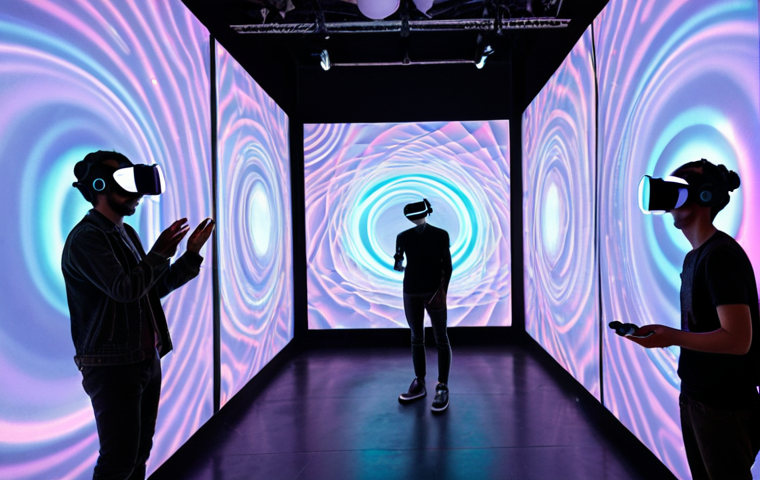
What truly astounds me is how data, once a foreign concept in the arts, has become a powerful tool. It’s not about reducing art to numbers, but understanding how people engage with it.
* Analytics for Impact: Utilizing visitor data, online engagement metrics, and social media insights to tailor programs and measure cultural impact.
* Personalized Art Journeys: Crafting bespoke digital experiences or recommendations based on audience preferences, much like how streaming services suggest movies.
* Strategic Digital Marketing: Developing sophisticated digital campaigns that resonate with diverse demographics, moving far beyond simple email blasts.
The Heart of Community: Art as a Catalyst for Connection
My personal journey in the arts has always underscored the power of community, but I’ve watched it evolve from a vague aspiration into a deeply strategic focus for art and culture planning agencies.
It’s no longer enough to simply host an event; there’s a profound emphasis on fostering genuine connections, empowering local voices, and ensuring art truly reflects and serves its community.
This shift feels incredibly organic and necessary, especially in a world that often feels disconnected. I’ve been involved in projects where the community literally co-created the art, and the sense of ownership and pride was palpable.
It’s a testament to the fact that art thrives when it’s rooted in the lives and experiences of the people it seeks to engage. This human-centric approach is becoming the very bedrock of successful cultural initiatives.
1. Co-creation and Participatory Art
This is where the magic truly happens – when the community isn’t just an audience, but a participant, even a co-creator. * Facilitating Inclusive Workshops: Designing and leading programs that invite diverse community members to contribute to artistic processes.
* Building Local Partnerships: Collaborating with community leaders, non-profits, and local businesses to ensure projects are relevant and sustainable.
* Empowering Marginalized Voices: Creating platforms and opportunities for underrepresented groups to express themselves and share their stories through art.
2. Place-Making and Urban Revitalization
I’ve seen firsthand how art can breathe new life into forgotten spaces and spark urban regeneration. It’s not just about aesthetics; it’s about creating vibrant, living spaces.
* Strategic Site-Specific Programming: Identifying underutilized public spaces and conceptualizing artistic interventions that transform them into cultural hubs.
* Cross-Sector Collaboration: Working with urban planners, architects, and local governments to integrate art seamlessly into city development plans.
* Measuring Social Impact: Developing metrics to assess how artistic projects contribute to community well-being, economic development, and civic pride.
Navigating the Entrepreneurial Current: Beyond Grants
It’s an undeniable truth, one I’ve wrestled with many times myself: the funding landscape for arts and culture has shifted dramatically. Gone are the days when grant applications were the sole focus.
Today, agencies are actively seeking individuals who possess a strong entrepreneurial spirit, capable of identifying diverse revenue streams, forging innovative partnerships, and thinking like a sustainable business while maintaining artistic integrity.
This can be challenging, but it’s also incredibly liberating. I’ve personally witnessed projects flourish because they embraced a hybrid model, proving that creativity and commercial viability aren’t mutually exclusive.
It’s about resilience, adaptability, and a proactive approach to securing the resources needed to bring ambitious artistic visions to life.
1. Diversified Funding Models
Reliance on a single funding source is a recipe for anxiety. Agencies are now actively building robust, diversified financial foundations. * Cultivating Private Philanthropy: Engaging high-net-worth individuals and corporate sponsors who align with artistic missions.
* Exploring Earned Income Opportunities: Developing ticketed events, merchandise, educational programs, or unique experiences that generate revenue.
* Crowdfunding & Digital Fundraising: Leveraging online platforms to engage broader audiences and democratize financial support for projects.
2. Strategic Partnerships and Collaborations
I’ve always believed that collaboration multiplies impact, and in today’s landscape, it’s a strategic imperative. * Inter-organizational Synergies: Forging alliances with non-arts organizations, tech companies, or even local businesses to create mutually beneficial projects.
* Cross-Disciplinary Ventures: Bringing together artists from different fields, or even scientists and technologists, to spark new creative avenues and audience reach.
* Sponsorship Acquisition and Management: Identifying potential sponsors, crafting compelling proposals, and nurturing long-term relationships that benefit both parties.
The Green Revolution: Art’s Role in Sustainability & Ethics
When I first started, “sustainability” in the arts mostly meant keeping the lights on. Now, it’s a profound, ethical commitment woven into the very fabric of cultural planning.
I’ve observed a growing demand for professionals who understand the environmental and social impact of artistic practices and can champion ethical considerations throughout the entire project lifecycle.
This isn’t just a trend; it’s a moral imperative, and it deeply resonates with me. From reducing waste in exhibition design to promoting fair labor practices for artists, it’s about ensuring that our pursuit of beauty doesn’t come at the cost of our planet or its people.
Agencies are not just talking the talk; they’re walking the walk, seeking individuals who can integrate these principles seamlessly into their operations and programming.
1. Environmentally Conscious Practice
Reducing the ecological footprint of artistic endeavors is becoming a core competency. * Sustainable Exhibition Design: Utilizing recycled materials, minimizing waste, and exploring energy-efficient solutions for installations and venues.
* Green Logistics & Operations: Implementing practices for reduced travel emissions for touring artists and environmentally friendly procurement policies.
* Communicating Environmental Messages: Creating artistic projects that raise awareness about climate change and inspire environmental action.
2. Ethical Sourcing and Fair Practice
Ensuring that art is created and presented in a way that respects all individuals involved is paramount. * Fair Artist Compensation: Advocating for equitable pay, royalties, and transparent contracting for artists and cultural workers.
* Inclusive Curation and Programming: Actively seeking out diverse voices and perspectives, challenging historical biases, and promoting equity in representation.
* Cultural Sensitivity and Appropriation: Navigating complex issues of cultural heritage with respect and understanding, avoiding appropriation, and fostering genuine collaboration.
Future-Proofing Your Toolkit: Evolving Skills for the Arts Sector
Looking back, I can see how my own skillset had to constantly adapt, but the pace of change now is frankly exhilarating and a bit daunting for newcomers.
The art and culture sector is no longer a static, specialized niche; it’s a vibrant, interconnected ecosystem demanding a blend of traditional artistic sensibilities and cutting-edge operational acumen.
What truly impresses me are the individuals who possess a “T-shaped” skillset – deep expertise in one area, combined with a broad understanding of multiple disciplines.
It’s about being a lifelong learner, unafraid to dive into new technologies, business models, or community engagement strategies. From my perspective, those who thrive are the ones who view every challenge as an opportunity to grow, always seeking to bridge the gap between creative vision and practical execution.
| Skill Category | Traditional Focus (Past) | Emerging Focus (Present & Future) |
|---|---|---|
| Digital Proficiency | Basic office software, simple website updates | VR/AR concept development, data analytics, digital marketing, AI integration |
| Community Engagement | Audience attendance, basic outreach | Co-creation, participatory design, genuine partnership building, social impact measurement |
| Business Acumen | Grant writing, budget tracking | Entrepreneurial models, diversified revenue streams, strategic partnerships, financial innovation |
| Sustainability & Ethics | Compliance with regulations | Circular economy principles, ethical supply chain, fair labor practices, climate advocacy |
| Adaptability & Learning | Mastery of specific art form/process | Rapid upskilling, cross-disciplinary collaboration, problem-solving complex challenges, critical thinking |
1. Cross-Disciplinary Fluency
The silos are breaking down, and true innovation happens at the intersections. * Understanding Business & Marketing: Grasping core business principles, market analysis, and effective communication strategies beyond traditional PR.
* Basic Technological Literacy: Not needing to code, but understanding the capabilities and limitations of AI, blockchain for provenance, or immersive tech.
* Social & Environmental Awareness: A deep understanding of contemporary societal issues and how art can address or reflect them ethically.
2. Resilience and Emotional Intelligence
This field is passionate but also demanding. Personal qualities are just as critical as technical skills. * Adaptive Problem-Solving: The ability to pivot quickly, find creative solutions under pressure, and navigate ambiguity with confidence.
* Collaborative Spirit & Empathy: Working effectively in diverse teams, understanding different perspectives, and fostering inclusive environments. * Strong Communication & Storytelling: Articulating complex ideas clearly, passionately, and persuasively to diverse stakeholders, from artists to funders to the general public.
Concluding Thoughts
The landscape of art and culture planning is more dynamic and exhilarating than ever before. It’s a field that demands a blend of creativity, strategic thinking, and a genuine passion for making a meaningful impact.
By embracing these evolving skillsets—from digital prowess to ethical leadership—you’re not just adapting; you’re actively shaping the future of how art connects with communities and enriches our world.
It’s a challenging but deeply rewarding path, and for those ready to leap, the opportunities are boundless.
Useful Information to Know
1. Professional Organizations: Consider joining associations like the American Alliance of Museums (AAM) or the Association of Arts Administration Educators (AAAE) for networking, professional development, and access to job listings. These groups often host valuable webinars and conferences.
2. Online Learning Platforms: Platforms like Coursera, edX, or even specific university extension programs offer excellent courses in digital marketing, data analytics, project management, and non-profit leadership that are directly applicable to the arts sector.
3. Key Industry Publications: Stay current by regularly reading publications such as Artsy, Artnet News, Hyperallergic, and industry reports from organizations like the National Endowment for the Arts (NEA) or the Arts Council England. These provide insights into trends and best practices.
4. Volunteer & Internship Opportunities: Gaining hands-on experience, even in a volunteer capacity, at local galleries, museums, or cultural centers can provide invaluable real-world skills and connections that formal education alone cannot. It’s how many of us got our start.
5. Attend Arts Tech Meetups & Conferences: Seek out events that bridge the gap between art and technology. These can be incredible opportunities to meet innovators, see cutting-edge projects, and understand where the field is truly heading. Think outside traditional art circles.
Key Takeaways
The arts and culture planning sector is rapidly evolving, demanding professionals who are digitally savvy, community-focused, entrepreneurially minded, and committed to sustainability and ethics.
Continuous learning, cross-disciplinary collaboration, and strong emotional intelligence are critical for success in this dynamic field. Embracing these new competencies is essential for individuals aiming to lead and innovate in the arts.
Frequently Asked Questions (FAQ) 📖
Q: Given this massive shift you’re describing, what was the biggest wake-up call for the art and culture sector to finally embrace digital and entrepreneurial skills?
A: Honestly, if you ask me, it wasn’t a single “aha!” moment, but more a slow, creeping realization that the old ways just weren’t cutting it anymore. I remember a conversation with an old gallery owner, bless his heart, who swore by physical exhibitions alone.
But then, COVID hit, and suddenly, everyone, everyone, had to pivot. It was like a forced leap into the digital age. Audiences, especially younger ones, just expect interactive experiences, virtual tours, and engaging online content now.
Plus, the funding landscape has shifted; you need to demonstrate impact and sustainability, which often means innovative digital outreach and a sharper business sense.
It stopped being optional and became existential, frankly.
Q: You mentioned ‘immersive digital experiences and sustainable models’ becoming central. Can you give us a real-world peek into what that actually looks like on the ground? Like, what are some tangible examples we might actually encounter?
A: Oh, absolutely! It’s not just about slapping up a website anymore. I recently visited a local museum here in London that launched an augmented reality app.
You hold your phone up, and suddenly, a historical figure from the painting steps out and tells their story. Blew my mind! And for sustainability, I’m seeing everything from smaller galleries using recycled materials for their installations to larger institutions focusing on carbon-neutral operations for their touring exhibitions.
Think less about grand, one-off spectacles and more about continuous engagement and a lighter environmental footprint. There’s also this fantastic initiative in Brooklyn where artists are turning derelict community spaces into vibrant hubs using upcycled materials and running skill-share workshops – very grassroots, very sustainable, and utterly captivating.
Q: With all these changes, if someone – perhaps a student just starting out or even a seasoned professional looking to upskill – asked you for the absolute ‘must-have’ skills for success in this evolving landscape, what would be your top three, and why?
A: That’s a question I get all the time, and it’s a tough one because it’s not just about one thing. If I had to pick three, without a shadow of a doubt:
1.
Digital Savvy, but with Soul: Don’t just know how to post on Instagram; understand how to use digital tools for storytelling, audience engagement, and maybe even a bit of data analytics.
Think VR/AR literacy, even if you’re not coding. It’s about leveraging technology to deepen the human experience, not replace it. 2.
Community Weaver: Art and culture thrive on connection. Whether it’s building online communities around an artist’s work or fostering local engagement for a festival, you need to be genuinely good at connecting people.
It’s about empathy, listening, and creating spaces – virtual or physical – where people feel they belong. 3. The ‘Hustle’ Mindset (in the best sense): This isn’t about being cutthroat, but about being adaptable, resourceful, and always looking for new avenues.
The traditional funding models are shrinking, so you need to be creative about revenue, collaborative partnerships, and even your own personal brand. It’s about seeing problems as opportunities, and honestly, having a thick skin and a whole lot of passion, because it’s a marathon, not a sprint!
📚 References
Wikipedia Encyclopedia
구글 검색 결과
구글 검색 결과
구글 검색 결과
구글 검색 결과
구글 검색 결과
